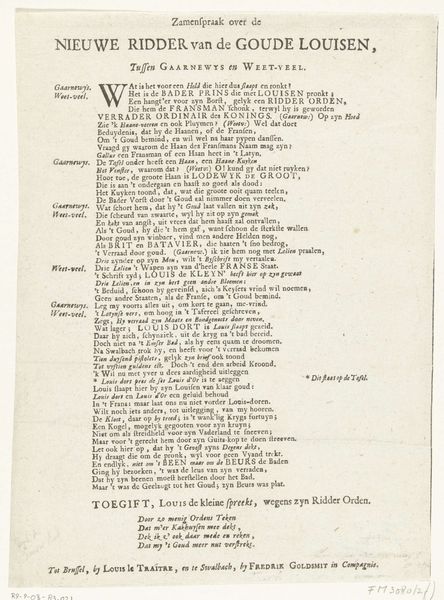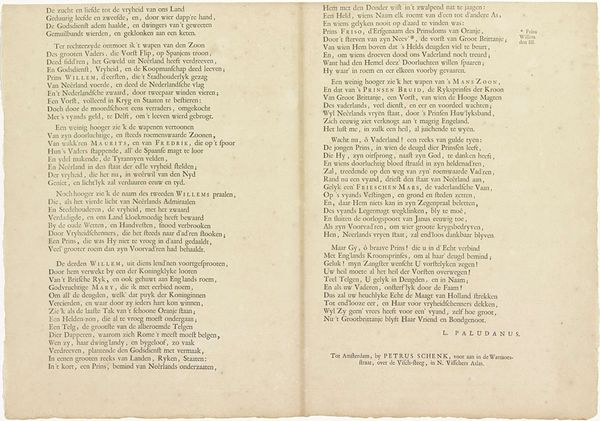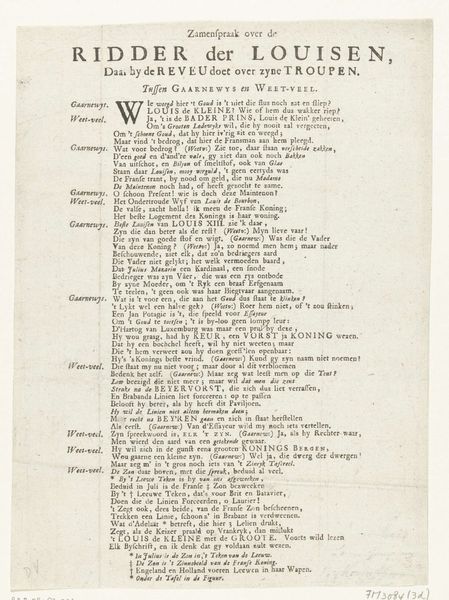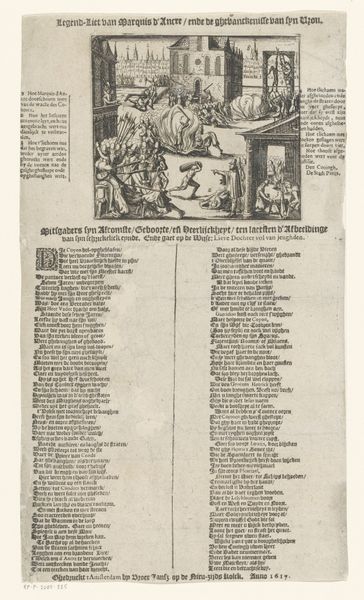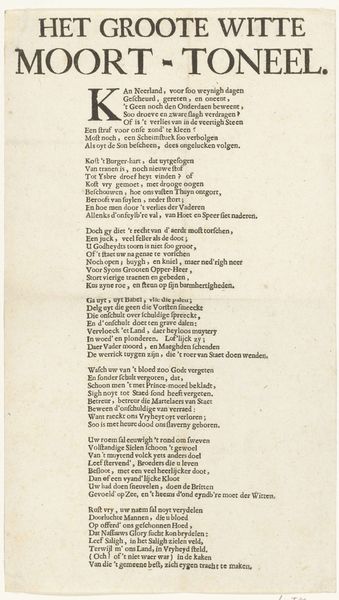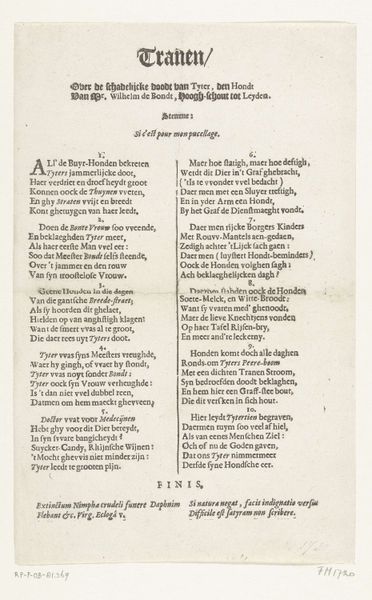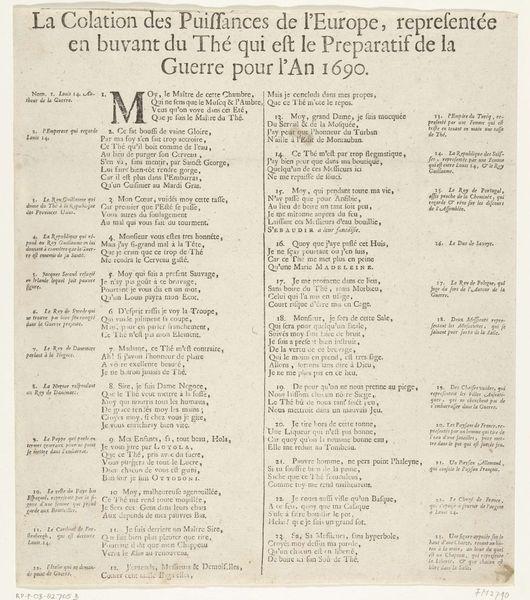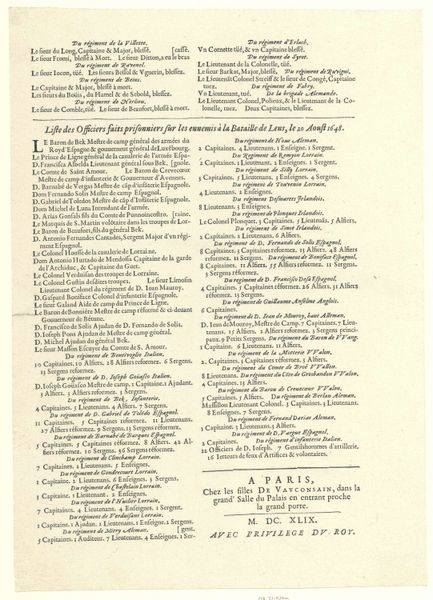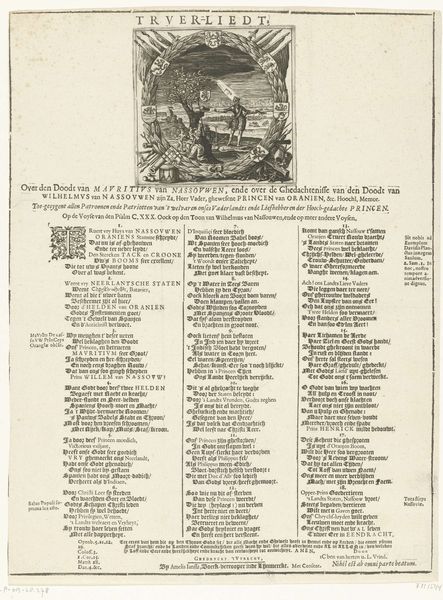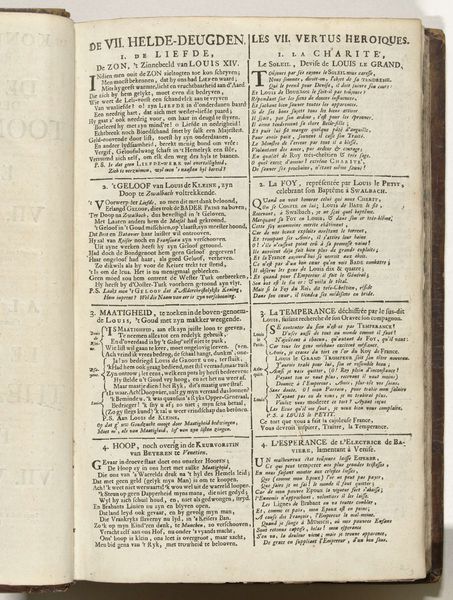
graphic-art, print, textile, typography
#
script typeface
#
graphic-art
#
hand-lettering
#
baroque
# print
#
editorial typography
#
hand drawn type
#
hand lettering
#
textile
#
typography
#
hand-drawn typeface
#
stylized text
#
thick font
#
handwritten font
#
calligraphy
#
small lettering
Dimensions: height 415 mm, width 261 mm
Copyright: Rijks Museum: Open Domain
Curator: This fascinating broadside, “Lofdicht op prins Willem III,” created anonymously in 1673, is currently held in the Rijksmuseum’s collection. Editor: My first impression is that it has the feel of a proclamation. I find it somber despite its decorative typeface; it's very much rooted in its historical moment. Curator: Exactly! The Baroque hand-lettering and typography showcase a time when script itself held deep cultural significance. Notice how the "Z" initial functions almost as an emblem, invoking symbolic authority and memory. It reflects an era where typography and text were intrinsically linked to the act of visually communicating a message to audiences, and a shared sense of Dutch cultural identity, especially in how the words fill every possible space. Editor: Yes, the sheer density of the text underscores a clear propagandist agenda. With William of Orange presented almost as a mythical figure. This wasn't merely an announcement, but a careful exercise in the projection of power and leadership. Consider the socio-political tensions of 1673 with constant conflict from foreign forces: every carefully-lettered word becomes a bulwark. Curator: The design reinforces this sense of unwavering resolve, wouldn't you agree? Note the deliberate, heavy fonts – they carry so much emotion, and an appeal to a strong unified identity to hold firm against adversity. Editor: Agreed. You see not just visual information but what Walter Benjamin called a “cultural artifact.” This printed page isn't a mere neutral record. It acts as both the message and a lens through which its audience must process history, reinforcing specific narratives through its very form. Curator: That said, by interpreting and respecting the visual motifs of historical objects, we are able to explore the depth and the evolution of symbolism, its emotional depth, and continuity. Editor: Absolutely. Engaging with art this way enables conversations about both what it communicates, and how it strategically communicated to serve distinct purposes back then, and what it means to do that today. Curator: Indeed! We've explored this artifact's historical context and symbolism together; a compelling reminder of the dynamic nature of interpretation, as history engages the present.
Comments
No comments
Be the first to comment and join the conversation on the ultimate creative platform.

